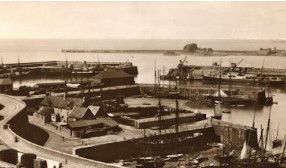In the early development of the Jersey harbour, it was protected from winds and rough seas which made it easy for small boots to sail. It was also a great place to trade with France and the British Isles. Therefore, this enabled Jersey to start their trading with other countries which helped them bring in money for the island. By the 14th century, the Jersey harbour became a fishing and trading port and as the capital of Jersey, St Helier grew, it helped to make the harbour more important and become more popular. By the 1700s, St Helier became the primary port of the island. However, this meant they needed to upgrade the harbour as more, bigger ships were made. New docks and jetties were made for ships to load and unload the goods that were being traded.



In 1840, Victoria Pier was built to accommodate much bigger ships, it also improved access for vessels carrying cargo which had difficulty docking. In 1845, Albert Pier was built which further enhanced docking capabilities and allowed ferries to arrive with passengers which allowed Jersey to connect with the mainland.
During both of the World Wars, the harbour was significantly important. During World War 2, the Germans occupied the harbour and made changes to support them during the war. After the war, the harbour was modernized. Facilities for the ships and the harbour improved and container shipping was introduced which improved the trading operations.
Today, Jerseys harbours are still significantly important. It allows the handling of goods like agricultural products, fish and building materials.
